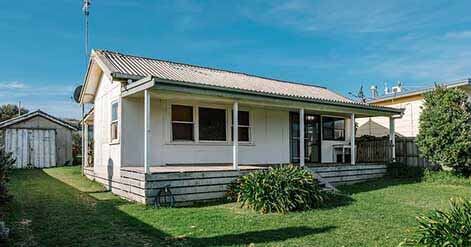HAMP Conversion Drive – Pushing hard to sell homeowners the most exotic mortgage yet

Monday, the administration announced a nationwide campaign to push their failing Home Affordable Modification Program (HAMP) out of the HAMPer. Until now the focus has been on getting loan modifications started with a stated goal of reaching 500,000 trial modifications by November 1, 2009. Unfortunately, despite having successfully hit this goal, it is becoming increasingly clear that the program is failing, a few of these trial modifications have converted to permanent modifications. A little over half of the 650,000 borrowers who started trial loan modifications are eligible to convert to permanent modifications by the end of 2009. The administration’s announcement today is an effort to rescue the program and make sure these modifications actually do convert with a campaign to:
-
- Extend the trial period, to allow more borrowers to complete the paperwork.
- Develop publicly reported operational metrics, to hold servicers accountable for their performance.
- Possibly impose monetary penalties and sanctions on under-performing servicers.
- Engage HUD field-office staff and HUD-approved counseling organizations to distribute outreach tools.
- Engage the National Governors Association (NGA), National League of Cities (NLC), and National Association of Counties (NACo) in thousands of state, local, and county offices, to increase awareness of the program and assistance for borrowers.
Apparently, the assumption is that borrowers aren’t completing the paperwork because it’s too complex or confusing. But what if they aren’t completing the paperwork because they’re reluctant to fall for another toxic mortgage? High-risk, sub-prime option ARM loans contributed to this mess in the first place. To fix the problem the administration proposes to:
-
- Offer homeowners temporarily lower payments on loans they are unlikely to ever be able to repay.
- Force servicers to expedite applications under threat of public flogging, financial penalties, and sanctions.
- Enlist private associations and government agencies at all levels to hawk its program as being good for homeowners.
Maybe borrowers have figured out that this program is really only another exotic mortgage like one they fell prey to when they bought or refinanced the house that resulted in their current predicament. HAMP and the administration's newly announced campaign isn’t digging borrowers out of a hole. It’s only digging them a new one and delaying the inevitable. The original hole was created with a clear downside and a theoretical upside:
-
- The downside: exotic financing, that qualified buyers for homes they clearly couldn’t afford by offering a low payment upfront, despite unaffordably high payments in the future.
- The upside: the expectation that the appreciated value in the house will allow the borrower to refinance or sell at a profit before their payment skyrockets.
The new hole offered by HAMP is all the downside with none of the upside.
-
- The downside: exotic re-financing, by which they make payments affordable today, but leave homeowners in the same boat down the road when payments ratchet back up after 5 years.
- The bonus downside: there is no reasonable expectation that home values will appreciate anywhere near enough to get these loans above water before the 5 years is up, or before the homeowner runs into a real-life event like job loss, divorce, or job relocation – leaving them stuck in an upside-down prison of debt.
What’s more, it’s not just bad for borrowers, it’s bad for everybody. Servicers and lenders simply delay their inevitable losses and suffer a lousy rate of return thanks to the artificially low payment until then. Everybody suffers as the economy limps along, as it is hard to justify a spending spree when you are upside down in your home by tens or even hundreds of thousands of dollars. Even the stealth stimulus package disappears as people make their modified mortgage payments. The housing problem may need an intervention, but not this intervention. Like offering drugs to an addict, repeating our past mistakes by putting people back into exotic mortgages is certainly not the cure. It’s time to go through withdrawal and kick the habit by addressing the real problem, negative equity.


